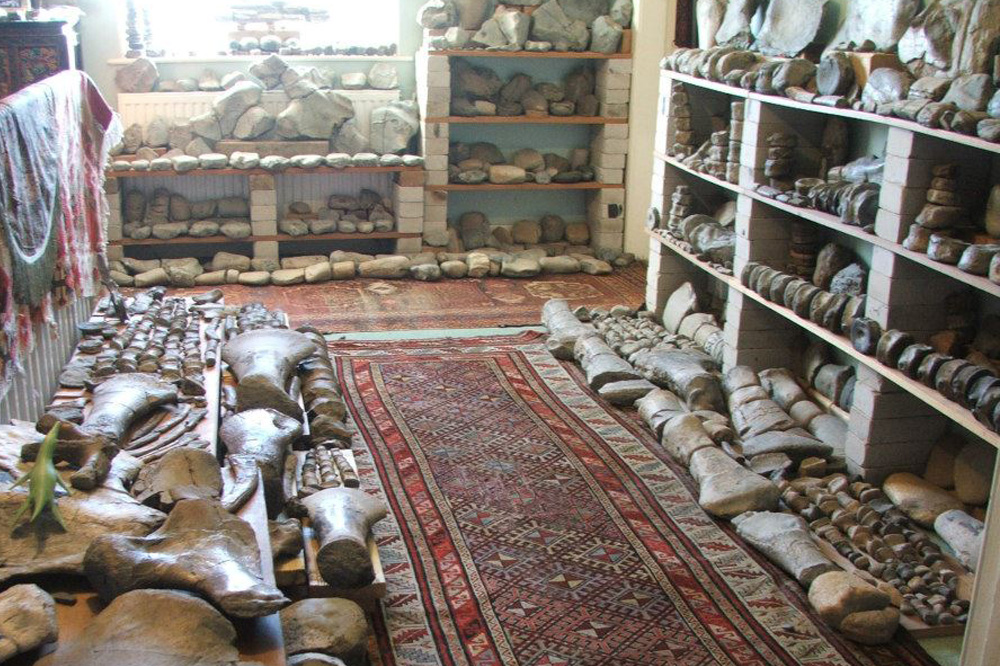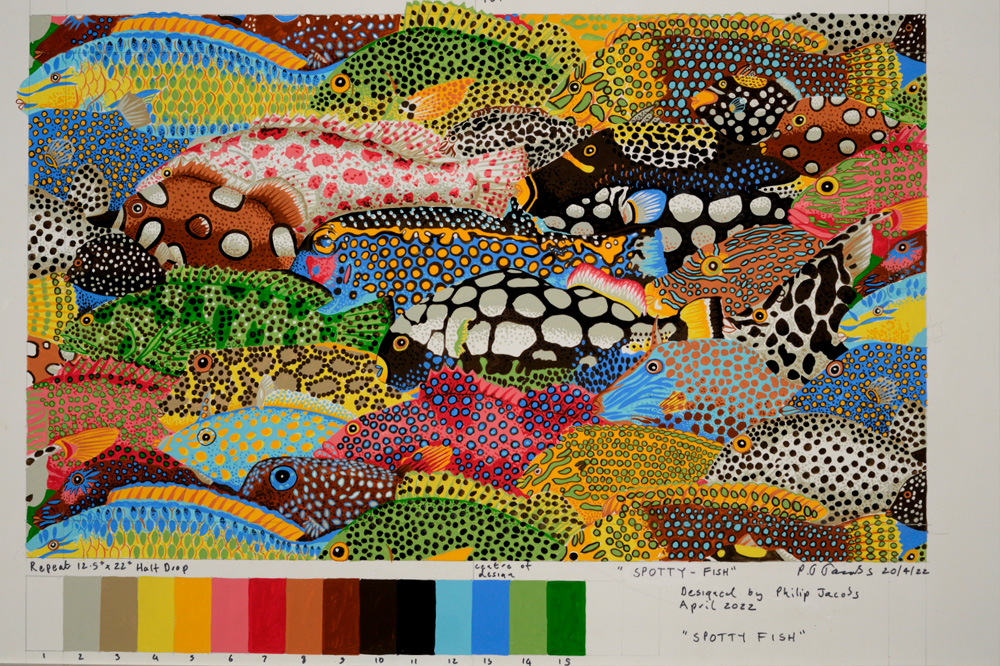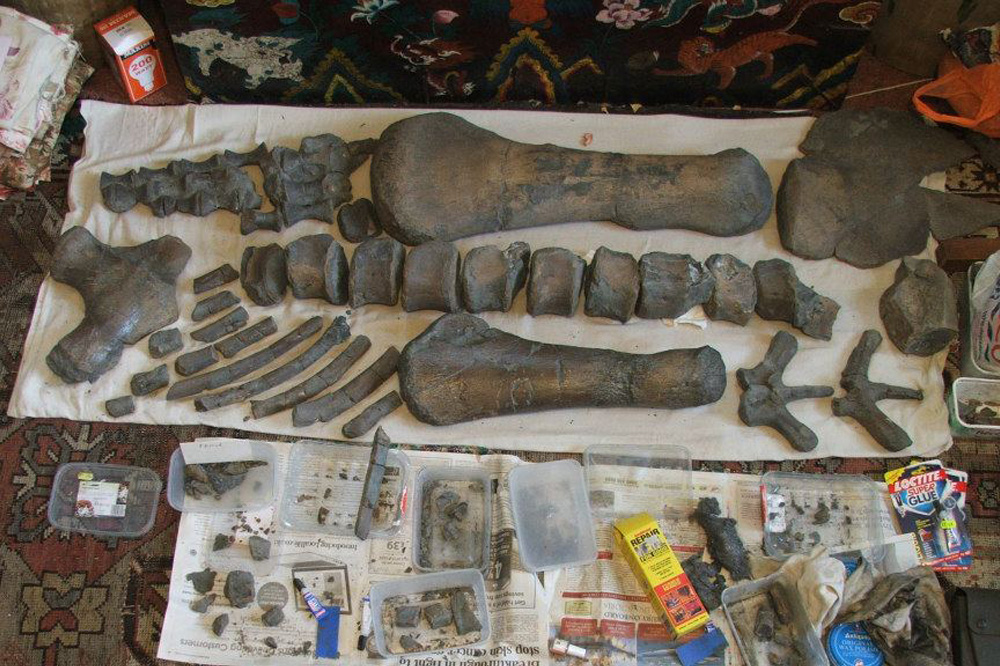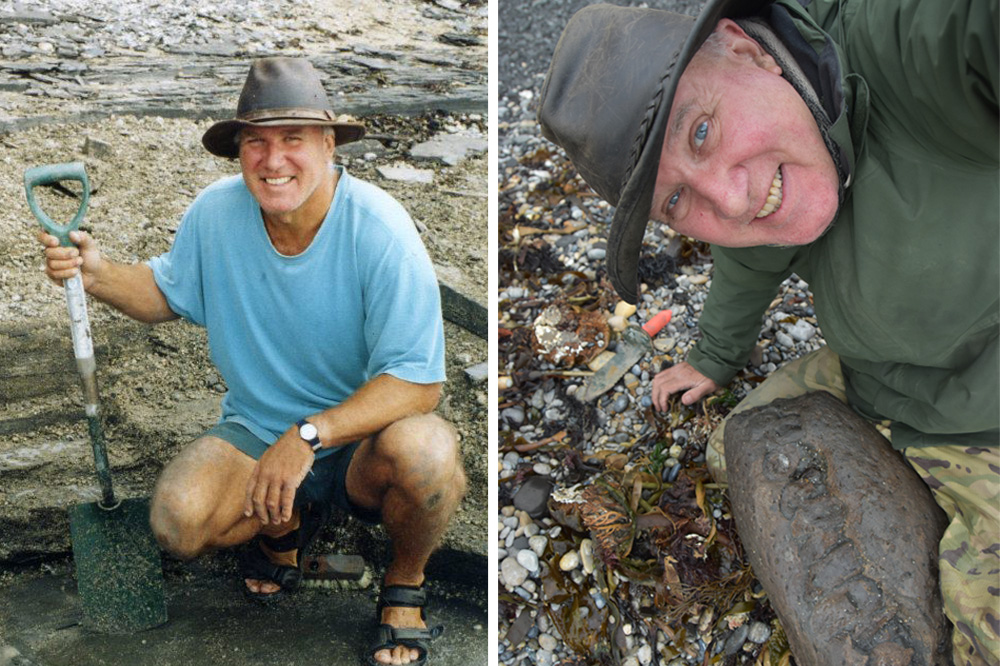THE man whose find featured in Attenborough and the Giant Sea Monster talks about his journey with fossils, fabrics – and a life searching for beauty.
Despite discovering the pliosaur in April 2022, Philip Jacobs was only given a fleeting mention in the credits of the BBC’s landmark programme.
After a petition of more than 5,000 called for greater recognition, the broadcaster added his name to the top of the “with thanks to”.
However, the 69-year-old says he has never done it for recognition, and gifts any discoveries to the Etches Collection in Kimmeridge, run by his friend, Steve Etches.
“You can’t take any of it with you,” he said. “It’s great to have Steve there with his museum, I can go and see them whenever I like.”

Philip has gifted his entire collection to the nation. Photo: Philip Jacobs.
Philip is an amateur only in name, dedicating more than 40 years of his life to the search for fossils, alongside his career as a fabric designer.
First producing art as a teenager in the 1960s, he was inspired by the era’s psychedelic style, infusing it with Tibetan and Japanese work.
He completed a BA in Textiles at Kingston University, where his spark for palaeontology was ignited.
“We used to go on painting trips to the hills to do landscapes,” he said. “I was washing my brushes in a stream and spotted a fossilised sponge; as an artist, an amazing thing is just something that’s visually stunning.
“Then in the late 1970s, my mum started attending a geology evening class.
“She found a beautiful ammonite and I thought how much I’d love to find something like that.”
From that point Philip was hooked, frequently venturing from his home in Hampshire to hunt for fossils at Chapman’s Pool and Kimmeridge Bay.
At the same time, his career started to accelerate, becoming design director of Ramm, Son & Crocker, which produced pieces for high-end clients, including the Clintons.
But tastes quickly change and the 1990s saw Philip’s signature style drift out of favour.
“The bottom fell out of my industry,” he said. “Everything became grey and beige, and suddenly I became workless.
“It was in this gap that I got really into my fossils.”
This led to his his first major discovery – a nearly complete ichthyosaur.

An example of his work. Photo: Philip Jacobs.
He said: “I was walking along the beach and thought ‘Oh I’ve found a vertebrae’.
“I kept chipping away, then I found another, and another, and another.
“Suddenly I had a full row.”
As he was struggling to excavate the skeleton, Steve Etches arrived and explained that for a discovery of this size it’s paramount you dig a large trench into the rock and remove it one piece at a time.
READ MORE: Sir David Attenborough BBC show features “momentous” pliosaur discovery in Dorset
But the sheer size presented a logistical problem.
“I thought the whole thing was going to fall to bits,” Philip said. “We just couldn’t shift it.”
But then, it came out.
They’d initially planned to carry the blocks to Philip’s car, but it was parked two miles away and they’d been forced to sit down every 100 metres to rest.
Instead, they arranged for a small inflatable boat to ferry the ichthyosaur to safety.
Philip said: “It was the first time she’d had a swim in 153 million years.”

Working on some fossils. Photo: Philip Jacobs.
The discovery took a long time to prepare, but it’s now on display at the Etches Collection and was named ‘Britney’.
“It’s currently being written up into a scientific paper,” he said. “It’s probably a species new to science.”
And just as his fashion career was once halted abruptly, it’s seen a resurgence in recent years.
Philip has collaborated with designer Kaffe Fassett to produce garments worn by Jennifer Lopez, Conor McGregor and James May.
“It’s gone swimmingly well,” he said.
He’s worked with the most globally renowned fabric houses, and been completely cut off from the industry, as well as discovering hundreds of fossils without recognition, and made some of the largest paleontological discoveries of the 21st century.
His attitude?
“That’s how life goes,” he said. “It doesn’t matter if it completely falls to bits, because life does pick up again.”
Philip’s pliosaur, ichthyosaur, and the rest of his discoveries can be found at the Etches Collection Museum in Kimmeridge.









What a remarkable life of paleontology and a designer of gorgeous fabrics.
So pleased he has got the recognition he deserves. Wonderful Clever human being
Phillip Jacobs you are an ispiration to the world of creativity. Never ro be “pegged” into just one slot but to expand for all the perspective of enriched vision
All great stuff, but one thing intrigues me. On the BBC programme someone said it might be a ‘one in a billion find’. Was that a reference to it maybe being a new species – or something else? It’s surely not that finding a pliosaur is one in a billion chance, as I saw one last week at the Dorchester Museum.
What a wonderful article! Thank you for writing about Phillip Jacobs multiple discoveries & how he has influenced in the fabric design world! I have Ammonite fabric on order, from Phillip Jacobs August 2024 Collection!
Philip Jacobs also designs fabrics that are highly sought after by quilters worldwide. The fabric is luxurious.
Fantastic & beautiful art work
Wonderful person you are Philip Jacobs.
Thank you for a wonderful article about this amazing man. There is another side to him though! He is a considerable expert on Japanese art, particularly the most famous artist Hirohito. There should be a documentary film made about him!